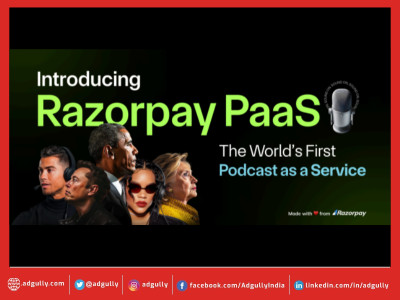Customer loyalty is becoming thinner by the day: Karthik Nagendra
He says customer loyalty is becoming thinner by the day. Brands, particularly the B2B ones will be able to capture better market share if they harness the power of thought leadership. Dr Karthik Nagendra, a serial entrepreneur, who recently launched his book, "The Thought Leader Way", spoke to Radha Radhakrishnan, Anchor of Mrigashira podcast, on how critical are thought leadership and content marketing for brands. You can listen to the podcast here: https://www.digitales.co.in/industry-insights/mrigashira-podcast/a-must-listen-chat-between-karthik-nagendra-and-radha-radhakrishnan-on-all-about-thought-leadership
Also read: Getting your B2B content marketing strategy right: Karthik Nagendra
Q: How do you define thought leadership?
A: In simple terms, it is a big idea, a unique perspective, or a demonstrated expertise in a specific area. These for me constitute thought leadership, and this can hold true for an organization or an individual as a personal brand as well. It is a big idea, a unique perspective or demonstrated expertise in a specific area so that you are trusted as a source.
Q: Many think content marketing is all about thought leadership. How does content marketing help build thought leadership?
A: Many times, thought leadership and content marketing are used interchangeably. But content marketing is a subset of thought leadership. Eventually, your end goal is thought leadership and content could be the means to reaching towards that end goal.
Thought leadership is not just about writing an article here and publishing it there occasionally or just writing a set of articles back to back without a unique point of view. It does not help you solve the problem. The way you can use content as a channel towards your thought leadership is if you have a good point of view on the subject, or you have a differentiated view and you have it backed with sufficient data and research, or you are able to predict what's the trend that's going to happen in a particular industry, and you're able to address it with solutions or to the customer pain points, and this is where content will actually lead to building thought leadership.
Interestingly, research also shows that only about 5% of B2B buyers, decision makers believe that the content that they receive from companies or marketers demonstrate thought leadership. A recent survey said about 70% of marketers want to increase their investment in content marketing, and they believe that they are demonstrating thought leadership. Whereas among the buyer community, only 5% believe that there is a clear thought leadership, which is being demonstrated by a company. This means there is lots to catch up.
Q: Why this gap and how can it be addressed?
Thought Leadership is a culture and it is a mindset. Thought Leadership is research driven, and very data centric. Many marketers have little idea on how to go about implementing Thought Leadership. This what my book helps to address. I want to help them (marketers) have that blueprint or a roadmap on what are the steps that they need to be taking, so that the investments which they are making is actually giving them the desired ROI.
Otherwise, what happens typically is that marketers think thought leadership is equal to lead generation and measuring the impact of every activity to how much leads was generated.
Q: What is the best way to measure thought leadership?
First and foremost, thing is thought leadership should be looked at as a long-term play. You need to stay invested to see better ROI. And the beauty of thought leadership is if you stay put, and if you stay instead invested in it, and in a consistent manner, your ROI amplifies over a period.
So, some of the metrics that you can probably look at as measurables could be, what is your brand audit score, showcasing with respect to your thought leader, perception of your customers, how much media that you're getting. or it could be awards that you are winning from reputed organizations or industry bodies and so on.
Q: If you are saying that it needs to be built like a culture, and it needs to be built over a long period of time, what is the duration that required to put in that kind of investment to reap the benefits?
A: At least an investment of about two years - rigorous investment and sustained investment is needed. Investment is not just monetary terms. It is also the time, the effort, the kind of content and solutions that you're building together. The problem is very few have that kind of patience.


















Share
Facebook
YouTube
Tweet
Twitter
LinkedIn